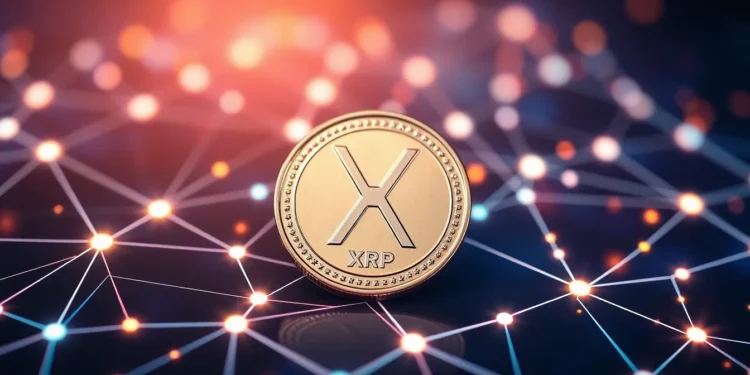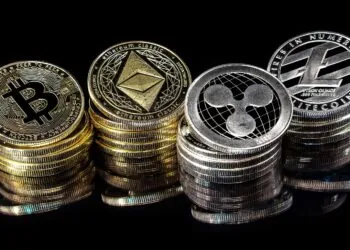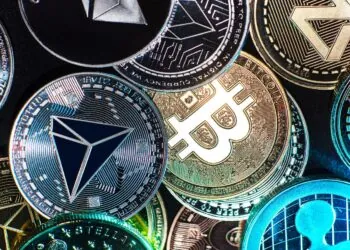Blockchain technology has revolutionized the way we think about digital transactions, and XRP is at the forefront of this transformation. As a cryptocurrency created by Ripple, XRP operates on its own unique blockchain called the XRP Ledger. This innovative platform is designed for fast and cost-effective cross-border payments, making it a popular choice for financial institutions looking to streamline their operations.
Understanding the blockchain behind XRP is crucial for anyone interested in the future of finance and digital currencies. The XRP Ledger stands out not just for its speed but also for its consensus mechanism, which differs from traditional mining processes. This article delves into the specifics of the XRP blockchain, exploring how it functions and its implications for the broader cryptocurrency landscape.
Understanding Blockchain Technology
Blockchain technology serves as the foundational structure for cryptocurrencies like XRP. This innovative technology enables secure, transparent digital transactions through its decentralized nature.
Definition of Blockchain
Blockchain is a distributed ledger technology that securely records transactions across a network of computers. Each transaction creates a “block,” which is then linked to the previous block, forming a “chain.” This configuration ensures data integrity and prevents unauthorized alterations. Unlike traditional databases, blockchains operate without a central authority, enhancing security and reliability.
Key Components of Blockchain
- Nodes: Nodes refer to individual devices connected to the blockchain network. Each node contains a complete or partial copy of the blockchain and participates in validating transactions.
- Blocks: Blocks are units of data containing transaction information. Each block includes a timestamp, transaction details, and a unique cryptographic hash linking it to the preceding block.
- Consensus Mechanism: Consensus mechanisms are protocols that enable network participants to agree on the validity of transactions. The XRP Ledger employs a unique consensus algorithm, differing from traditional proof-of-work systems.
- Ledger: A ledger is a chronological record of transactions. Blockchain ledgers are immutable, meaning once a transaction is recorded, it cannot be changed or erased.
- Cryptography: Cryptography secures blockchain data, ensuring transactions are encrypted and authentic. It uses algorithms to protect information and manage the creation of new blocks.
Introduction to XRP

XRP is a digital asset developed by Ripple and operates on the XRP Ledger. This cryptocurrency facilitates fast and cost-effective transactions, particularly in cross-border payments.
What Is XRP?
XRP is a digital currency designed for efficient transactions within the Ripple network. It enables secure, instantaneous transfers and minimizes transaction costs. As a utility token, XRP serves as a bridge currency in cross-border payments, ensuring liquidity and faster processing. The supply of XRP is capped at 100 billion coins, with a portion held in reserve by Ripple for future sales and network support.
The Purpose of XRP in the Financial Ecosystem
XRP plays a crucial role in the global financial system. It aims to modernize payment processes among financial institutions and service providers. XRP enhances transaction speed, typically settling in 3 to 5 seconds, compared to other cryptocurrencies that may take longer. Its liquidity facilitates seamless transactions across various currencies, reducing the friction associated with traditional foreign exchange markets. Financial institutions use XRP to lower costs and improve transaction efficiency, reinforcing its utility within the larger cryptocurrency ecosystem.
The Blockchain XRP Operates On
XRP operates on the XRP Ledger, a unique blockchain framework tailored for efficient and rapid cross-border transactions. The XRP Ledger features a distinct architecture, optimizing the processing of digital assets.
Overview of the XRP Ledger
The XRP Ledger is an open-source blockchain designed specifically for digital currencies. It employs a decentralized network of validators to confirm transactions, enhancing its transparency and reliability. The ledger records all transactions chronologically, ensuring data immutability. With a maximum transaction capacity of up to 1,500 per second, the XRP Ledger offers substantial scalability compared to traditional blockchain systems. Furthermore, transaction fees remain low, averaging around $0.0002 per transaction, making it an appealing option for financial institutions seeking cost-effective solutions.
Consensus Mechanism of the XRP Ledger
The consensus mechanism of the XRP Ledger is distinct from traditional mining methods. Instead of relying on proof-of-work, it utilizes a unique protocol called the Ripple Protocol Consensus Algorithm (RPCA). RPCA enables quick agreement among validators on the state of the ledger. This method minimizes energy consumption and dramatically increases transaction speed, often settling transactions within 3 to 5 seconds. The mechanism enhances security while maintaining decentralization, allowing any participant to become a validator, fostering a diverse and resilient network.
Advantages of Using XRP
XRP offers several key advantages that enhance its appeal as a cryptocurrency, particularly for cross-border payment solutions. These benefits include speed and efficiency, as well as cost-effectiveness.
Speed and Efficiency
XRP transactions settle within 3 to 5 seconds, significantly faster than traditional banking systems, which can take several days to process cross-border payments. The XRP Ledger supports up to 1,500 transactions per second, allowing for substantial scalability. This high throughput makes XRP suitable for enterprises requiring rapid transaction processing. Additionally, the Ripple Protocol Consensus Algorithm (RPCA) enables quick agreement among validators, resulting in immediate transaction confirmations.
Cost-effectiveness
Transaction costs on the XRP Ledger remain remarkably low, averaging around $0.0002 per transaction. This minimal fee structure reduces the financial burden on users, especially compared to conventional payment systems that may impose higher fees for international transfers. XRP’s cost-effectiveness attracts financial institutions seeking efficient alternatives to traditional foreign exchange methods. By minimizing transaction costs, XRP enhances its utility for remittances and business transactions, promoting increased adoption across various markets.
Criticisms and Challenges of XRP
XRP faces various criticisms and challenges that impact its adoption and use. These issues primarily involve regulatory concerns and competition from other cryptocurrencies.
Regulatory Concerns
XRP’s regulatory status remains uncertain, particularly in the United States. The U.S. Securities and Exchange Commission (SEC) filed a lawsuit against Ripple Labs in December 2020, alleging that XRP functions as an unregistered security. This legal dispute creates hesitation among financial institutions and potential investors, limiting the digital asset’s growth. Several exchanges suspended XRP trading amid the legal uncertainty, affecting its market liquidity. Clarity on XRP’s regulatory status could facilitate broader adoption within mainstream finance.
Competition with Other Cryptocurrencies
XRP competes with numerous cryptocurrencies that also target cross-border payments and remittances. Bitcoin and Ethereum, for instance, dominate the market with larger user bases and established networks. Additionally, newer projects like Stellar and Algorand focus on similar use cases, aiming to attract financial institutions with enhanced features. This competition places pressure on XRP to continuously innovate and demonstrate its unique value proposition to remain relevant in the cryptocurrency space.
Conclusion
XRP’s position on the XRP Ledger showcases its potential to transform cross-border payments. With its unique consensus mechanism and rapid transaction speeds, it offers a viable alternative to traditional banking systems. The low transaction fees further enhance its appeal for financial institutions and businesses looking to streamline their payment processes.
Despite facing regulatory challenges and competition, XRP’s innovative approach and scalability keep it relevant in the evolving cryptocurrency landscape. As the world continues to embrace digital currencies, XRP’s role in facilitating efficient transactions will likely grow, solidifying its importance within the broader financial ecosystem.















